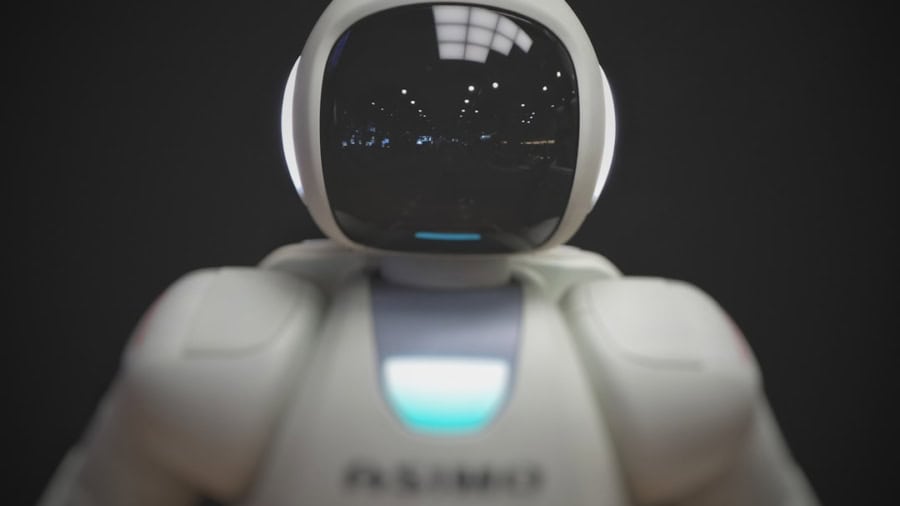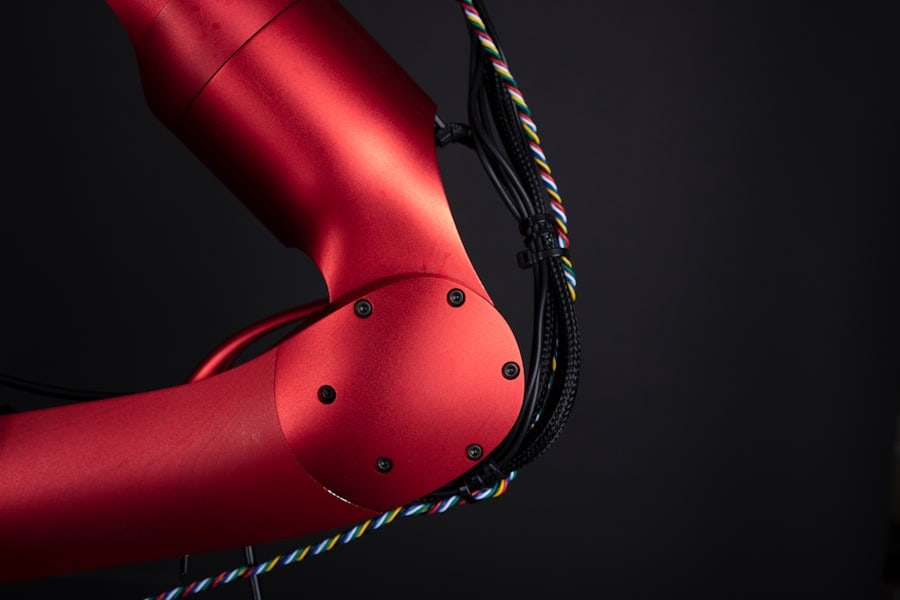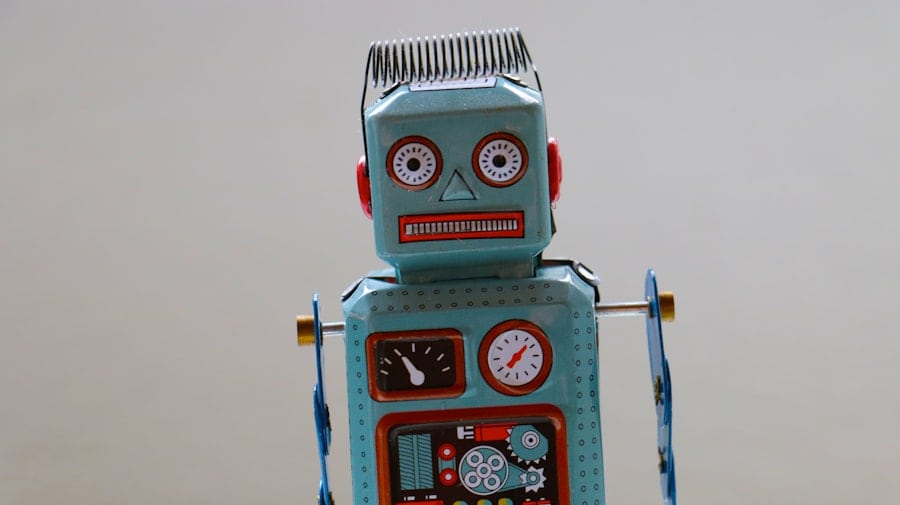The advent of robotics has revolutionized various sectors, and the culinary world is no exception. Smart kitchens, equipped with advanced technology, are transforming the way we prepare, cook, and manage food. These kitchens leverage robotics to enhance efficiency, reduce human error, and create a seamless cooking experience.
The integration of robotics into kitchen environments not only streamlines operations but also introduces a level of precision and consistency that is often unattainable through traditional methods. As consumers increasingly seek convenience and quality in their culinary experiences, the role of robotics in smart kitchens is becoming more pronounced. Robotic systems in smart kitchens can perform a myriad of tasks, from simple food preparation to complex cooking processes.
These systems are designed to work alongside human chefs or even operate autonomously, depending on the level of sophistication. For instance, robotic arms can chop vegetables with precision, while automated cooking appliances can monitor temperatures and cooking times to ensure perfect results every time. This technological evolution is not merely about replacing human labor; it is about augmenting human capabilities and enhancing the overall cooking experience.
As we delve deeper into the various applications of robotics in smart kitchens, it becomes evident that these innovations are paving the way for a new era in culinary arts.
Key Takeaways
- Robotics in smart kitchens revolutionize the way food is prepared, stored, and delivered, leading to increased efficiency and reduced waste.
- Automated inventory tracking and monitoring systems help kitchen staff keep track of stock levels in real-time, ensuring that ingredients are always available when needed.
- Efficient restocking and replenishment processes are made possible through robotics, allowing for timely and accurate replenishment of supplies without human intervention.
- Robotics play a crucial role in minimizing food waste by accurately measuring and dispensing ingredients, as well as optimizing storage and shelf life of perishable items.
- Streamlining order fulfillment and delivery processes with robotics ensures that orders are prepared and delivered in a timely manner, enhancing customer satisfaction.
Automated Inventory Tracking and Monitoring
One of the most significant advantages of incorporating robotics into smart kitchens is the ability to automate inventory tracking and monitoring. Traditional inventory management often relies on manual checks and balances, which can be time-consuming and prone to errors. In contrast, robotic systems equipped with sensors and artificial intelligence can continuously monitor stock levels, expiration dates, and product conditions.
This real-time data collection allows kitchen managers to maintain an accurate inventory without the need for constant manual oversight. For example, a smart kitchen might utilize RFID (Radio Frequency Identification) technology to track ingredients as they are used or restocked. Each item can be tagged with an RFID chip that communicates with a central inventory management system.
This not only saves time but also reduces the likelihood of running out of essential ingredients during peak service times. Furthermore, automated monitoring can alert staff when items are nearing their expiration dates, allowing for timely usage or disposal, thereby enhancing overall kitchen efficiency.
Efficient Restocking and Replenishment Processes
The efficiency of restocking and replenishment processes is another area where robotics can make a significant impact in smart kitchens. With automated systems in place, kitchens can streamline their supply chain operations, ensuring that ingredients are replenished promptly without overstocking or understocking. Robotics can facilitate this process by predicting inventory needs based on historical usage data and current trends.
For instance, machine learning algorithms can analyze past consumption patterns to forecast future demand, allowing kitchens to order supplies proactively rather than reactively. Moreover, robotic systems can assist in the physical restocking process as well. Automated guided vehicles (AGVs) can transport ingredients from storage areas to cooking stations, minimizing the time staff spend moving between different areas of the kitchen.
This not only enhances workflow efficiency but also reduces the risk of accidents that can occur when staff are hurriedly navigating through busy kitchen environments. By automating these processes, smart kitchens can maintain optimal inventory levels while allowing human staff to focus on more complex tasks that require creativity and culinary expertise.
Minimizing Food Waste with Robotics
Food waste is a pressing issue in the culinary industry, with significant environmental and economic implications. Robotics in smart kitchens plays a crucial role in minimizing waste through precise inventory management and intelligent food preparation techniques. By accurately tracking inventory levels and expiration dates, robotic systems can help ensure that ingredients are used before they spoil.
This proactive approach not only reduces waste but also contributes to cost savings for restaurants and households alike. Additionally, robotics can optimize food preparation processes to minimize waste during cooking. For example, robotic systems can be programmed to use every part of an ingredient, such as utilizing vegetable scraps for stocks or sauces instead of discarding them.
Advanced cutting technologies can ensure that food is prepared with minimal excess trimmings, further reducing waste. Some smart kitchens even employ composting robots that convert organic waste into compost for use in gardens or landscaping, creating a closed-loop system that benefits both the environment and the kitchen’s sustainability efforts.
Streamlining Order Fulfillment and Delivery
In an era where convenience is paramount, streamlining order fulfillment and delivery processes is essential for any modern kitchen operation. Robotics can significantly enhance these processes by automating order management systems and facilitating efficient delivery methods. For instance, smart kitchens equipped with robotic order fulfillment systems can receive customer orders through various channels—be it online platforms or mobile applications—and automatically prepare meals based on real-time inventory data.
Once meals are prepared, delivery robots can take over the logistics of getting food to customers’ doorsteps. These autonomous delivery vehicles are designed to navigate urban environments safely and efficiently, ensuring that food arrives fresh and on time.
Integration with Inventory Management Systems
The integration of robotics with inventory management systems is a critical component of modern smart kitchens. Advanced software solutions allow for seamless communication between robotic systems and inventory databases, enabling real-time updates and analytics. This integration ensures that kitchen staff have access to accurate information regarding stock levels, ingredient availability, and usage trends at all times.
For example, when a robotic system detects that a particular ingredient is running low, it can automatically generate a purchase order within the inventory management system. This eliminates the need for manual tracking and ordering processes, reducing the risk of human error and ensuring that kitchens remain well-stocked with essential items. Additionally, sophisticated analytics tools can provide insights into purchasing patterns and ingredient usage over time, allowing kitchen managers to make informed decisions about menu planning and supplier relationships.
Enhancing Food Safety and Quality Control
Food safety is paramount in any kitchen environment, and robotics can play a vital role in enhancing safety protocols and quality control measures. Automated systems equipped with sensors can monitor cooking temperatures, humidity levels, and other critical factors that influence food safety. For instance, robotic cooking appliances can ensure that meats are cooked to the appropriate internal temperatures while maintaining precise timing to prevent undercooking or overcooking.
Moreover, robotics can assist in maintaining cleanliness and hygiene standards within the kitchen. Automated cleaning robots can be deployed to sanitize surfaces and equipment regularly, reducing the risk of cross-contamination between different food items. These robots can operate on a schedule or be activated as needed, ensuring that cleanliness is maintained without requiring constant human oversight.
By integrating robotics into food safety protocols, smart kitchens can enhance their compliance with health regulations while providing customers with high-quality meals.
Future Trends and Innovations in Robotics for Smart Kitchens
As technology continues to evolve at a rapid pace, the future of robotics in smart kitchens holds exciting possibilities. One emerging trend is the development of more sophisticated artificial intelligence systems capable of learning from user preferences and adapting recipes accordingly. Imagine a kitchen robot that not only prepares meals but also learns your dietary restrictions and flavor preferences over time, creating personalized dining experiences tailored specifically to you.
Another innovation on the horizon is the integration of augmented reality (AR) with robotic systems in kitchens. AR technology could provide chefs with real-time guidance during meal preparation, overlaying instructions directly onto their field of vision through smart glasses or screens. This could enhance training for new staff members while also assisting experienced chefs in executing complex recipes with precision.
Furthermore, advancements in collaborative robots (cobots) are likely to reshape kitchen dynamics by allowing human chefs to work alongside robotic assistants seamlessly. These cobots will be designed to handle repetitive tasks while enabling chefs to focus on creativity and innovation in their culinary creations. As these technologies continue to develop, the potential for robotics in smart kitchens will expand exponentially, leading to more efficient operations and enhanced culinary experiences for consumers worldwide.
A related article to How Robotics Enhances Inventory Management in Smart Kitchens is “Unlock the Possibilities with Galaxy Book2 Pro 360” which discusses the latest advancements in technology and how devices like the Galaxy Book2 Pro 360 can revolutionize the way we work and manage inventory. To learn more about this innovative device, check out the article




